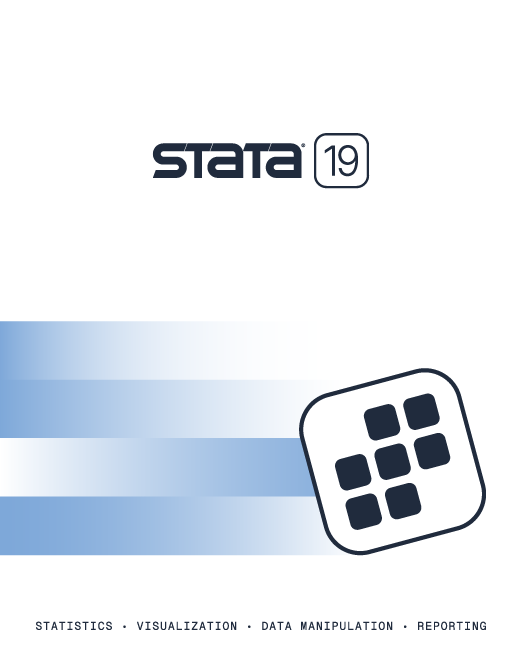

2025 Stata Conference • Nashville, TN • 31 July–01 August
Unobserved components model (UCM) was introduced in Stata 12.
Order |
Stata’s new ucm command estimates the parameters of an unobserved components model (UCM). UCM decomposes a time series into trend, seasonal, cyclical, and idiosyncratic components and allows for exogenous variables. UCM is an alternative to ARIMA models and provides a flexible and formal approach to smoothing and decomposition problems.
Here we fit monthly data on the median duration of unemployment spells in the United States to a stochastic cycle model with a stochastic seasonal component because the data have not been seasonally adjusted.
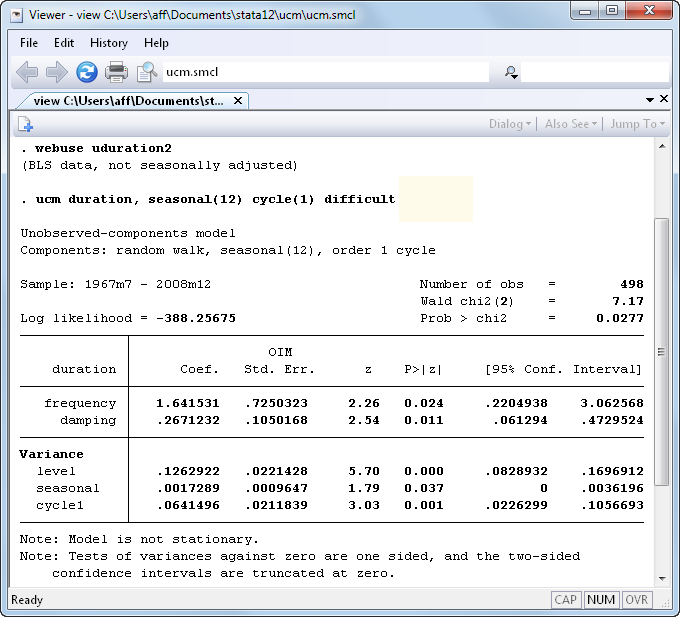
Important components are components with a large spectral density, and, thus, the estimated damping parameter specifies how tightly the important components are distributed around the estimated central frequency. We calculate and plot the spectral density implied by these parameter estimates below.
. psdensity omega density . twoway line omega density
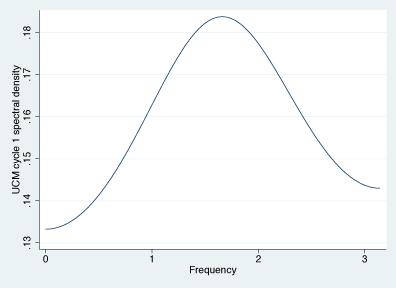
Moving on to prediction, we predict the trend and the seasonal components:
. predict strend, trend . predict season, seasonal
Below we graph the trend component in the top panel and the seasonal component in the bottom panel.
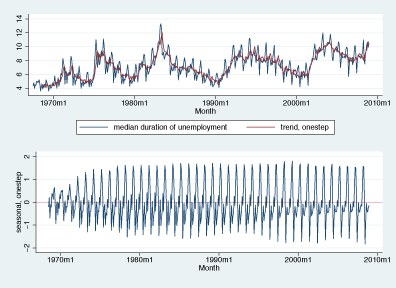
We can also forecast the median unemployment duration and graph the results.
. tsappend, add(12) . predict duration_f, dynamic(tm(2009m1)) rmse(rmse)
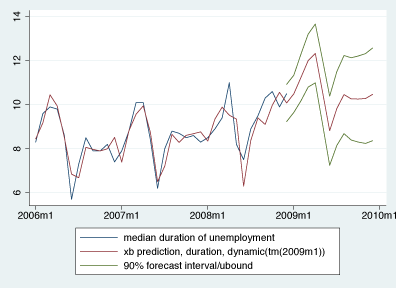
For a complete list of what’s new in time-series analysis, click here.
See New in Stata 19 to learn about what was added in Stata 19.
Learn
Free webinars
NetCourses
Classroom and web training
Organizational training
Video tutorials
Third-party courses
Web resources
Teaching with Stata
© Copyright 1996–2025 StataCorp LLC. All rights reserved.
×
We use cookies to ensure that we give you the best experience on our website—to enhance site navigation, to analyze usage, and to assist in our marketing efforts. By continuing to use our site, you consent to the storing of cookies on your device and agree to delivery of content, including web fonts and JavaScript, from third party web services.
Cookie Settings
Last updated: 16 November 2022
StataCorp LLC (StataCorp) strives to provide our users with exceptional products and services. To do so, we must collect personal information from you. This information is necessary to conduct business with our existing and potential customers. We collect and use this information only where we may legally do so. This policy explains what personal information we collect, how we use it, and what rights you have to that information.
These cookies are essential for our website to function and do not store any personally identifiable information. These cookies cannot be disabled.
This website uses cookies to provide you with a better user experience. A cookie is a small piece of data our website stores on a site visitor's hard drive and accesses each time you visit so we can improve your access to our site, better understand how you use our site, and serve you content that may be of interest to you. For instance, we store a cookie when you log in to our shopping cart so that we can maintain your shopping cart should you not complete checkout. These cookies do not directly store your personal information, but they do support the ability to uniquely identify your internet browser and device.
Please note: Clearing your browser cookies at any time will undo preferences saved here. The option selected here will apply only to the device you are currently using.